[ad_1]
Is the performance of AMD Ryzen mobile on battery really that bad?
If you’re even asking that question, you’ve no doubt heard Intel’s claims that Ryzen 4000 CPU performance tanked when running on battery. Plugged-in performance was dandy, but in tests of multiple Ryzen 4000U-based laptops, performance dropped huge amounts on battery, depending on the task.
While some reviewers checked AC and DC performance and found some nuggets of truth to Intel’s claims, the issue has mostly lain dormant for the last six months. Now that Ryzen 5000 is out, we decided to circle back and see if the claims still held. As you’ll see in our tests, what’s “good” or “bad” depends on whether you care more about performance or battery life.
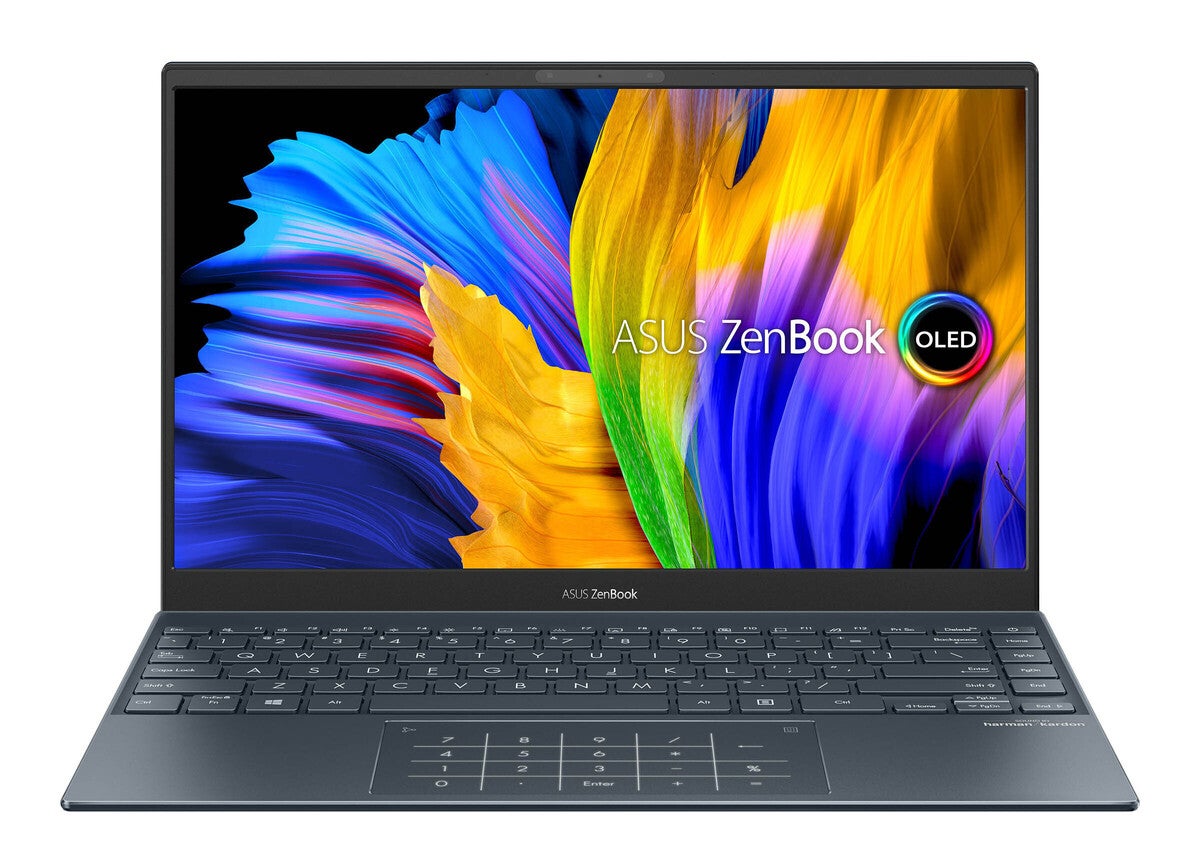 Asus
AsusThe Asus ZenBook UM325 features AMD’s new Ryzen 7 5800U.
How we tested
For our testing we used the same two laptops from our Ryzen 7 5800U review:
- Asus ZenBook UM325. It features AMD’s eight-core Ryzen 7 5800U, 16GB of LPDDR4X/4267, a PCIe 3.0 1TB SSD, a 65-watt-hour battery, and a 13.3-inch 1080p OLED, and it weighs 2.6 pounds.
- MSI Prestige 14. It features Intel’s four-core 11th-gen Core i7-1185G7, 16GB of LPDDR4X/4267, a PCIe 4.0 512GB SSD, a 52-watt hour battery, and a 14-inch 1080p IPS-level screen, and it weighs 2.7 pounds.
It’s important to note that there’s almost no such thing as an apples-to-apples comparison with laptops. Intel and AMD give laptop makers the CPUs, but everything else is specific to the vendor’s design for that system, from the display type and size, to the cooling design and the keyboard and the battery. Think of laptops instead as pairings of a specific design to a specific CPU—in this case, Asus ZenBook with Ryzen, and MSI Prestige 14 with Core i7. These two laptops were among the first out of the gate with their respective CPUs, so they are representative of what to expect.
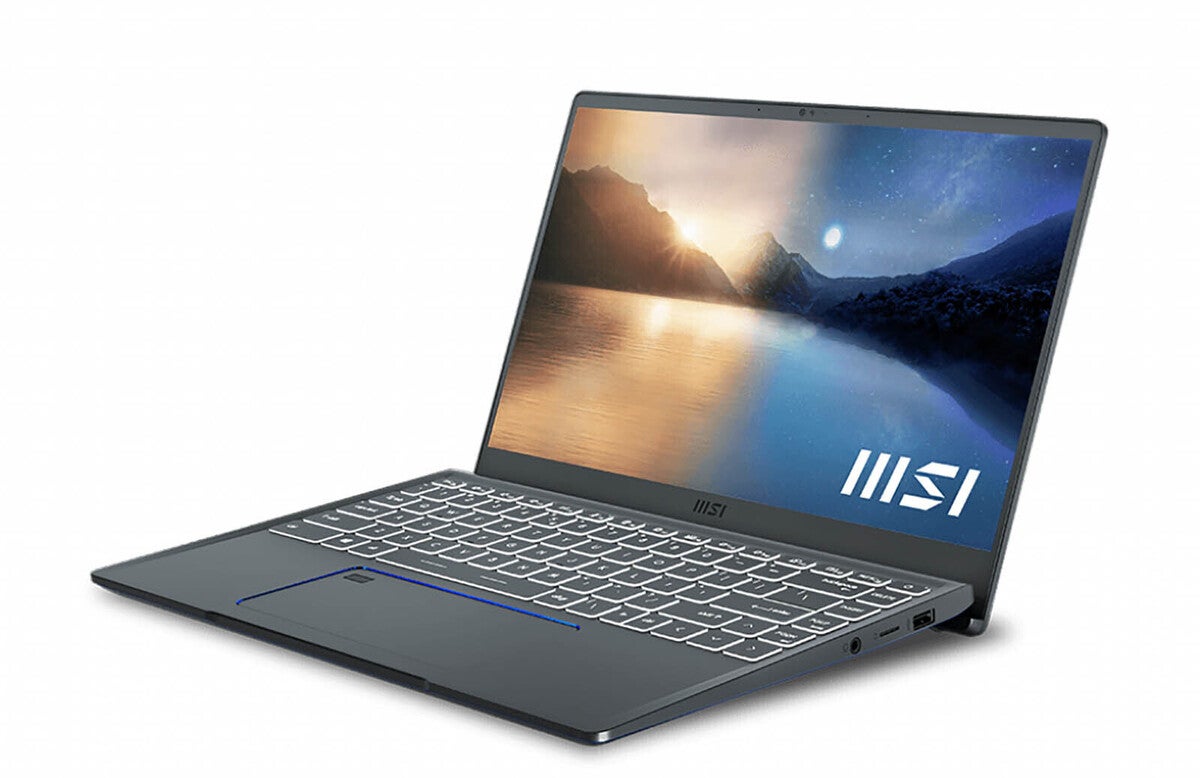 MSI
MSIMSI’s Prestige 14 EVO features Intel’s 11th-gen Core i7-1185G7
Both laptops were running Windows 10 20H2 (Build 1904.867) and the latest drivers available. Windows 10 offers four power performance states you can select when using. According to Microsoft documentation, they are:
Best Performance: Favors performance over power and is targeted at users who want to trade off power for performance and responsiveness. Available on both AC (plug-in electricity) and DC (battery).
Better Performance: Default slider mode that slightly favors performance over battery life and is appropriate for users who want to trade off power for better performance of their apps. Available on both AC and DC.
Better Battery: Delivers longer battery life than the default settings on previous versions of Windows. Available on both AC and DC. In some cases, users will see this mode labeled Recommended, rather than Better Battery, in their slider UI.
Battery Saver: Helps conserve power, and prolong battery life, when the system is not connected to a power source. When battery saver is on, some Windows features are disabled, throttled, or behave differently. Screen brightness is also reduced. Battery Saver is only available on DC.
For our testing, we used only the first three modes, because it’s understood that Battery Saver mode will involve a performance degradation. The ZenBook’s default unplugged mode is Better Battery, while the Prestige 14’s is Better Performance.
Cinebench AC/DC Testing
We’ll kick this off where we typically begin: Maxon’s Cinebench R20 3D rendering benchmark. It’s a test built on the company’s Cinema4D engine, which is integrated into Adobe’s Premiere and After Effects, and is also sold standalone. Like all 3D modelling applications, it favors more CPU cores and threads.
On this and all charts to follow, we show the AMD chip in red, and the Intel chip in blue.
In the first chart, for Cinebench multithreaded performance, the top pair of bars shows the stomping you’ve come to expect when pitting an eight-core CPU (AMD’s Ryzen) against a four-core CPU (Intel’s 11th-gen Core)—when running on AC, anyway. Once we switch to DC battery, for all other results shown below, you can see the drastic fall-off in performance for the Ryzen-based Asus. The four-core Intel chip gets uncomfortably close. However, you don’t see steeper declines as you move through the lower performance/power stages.
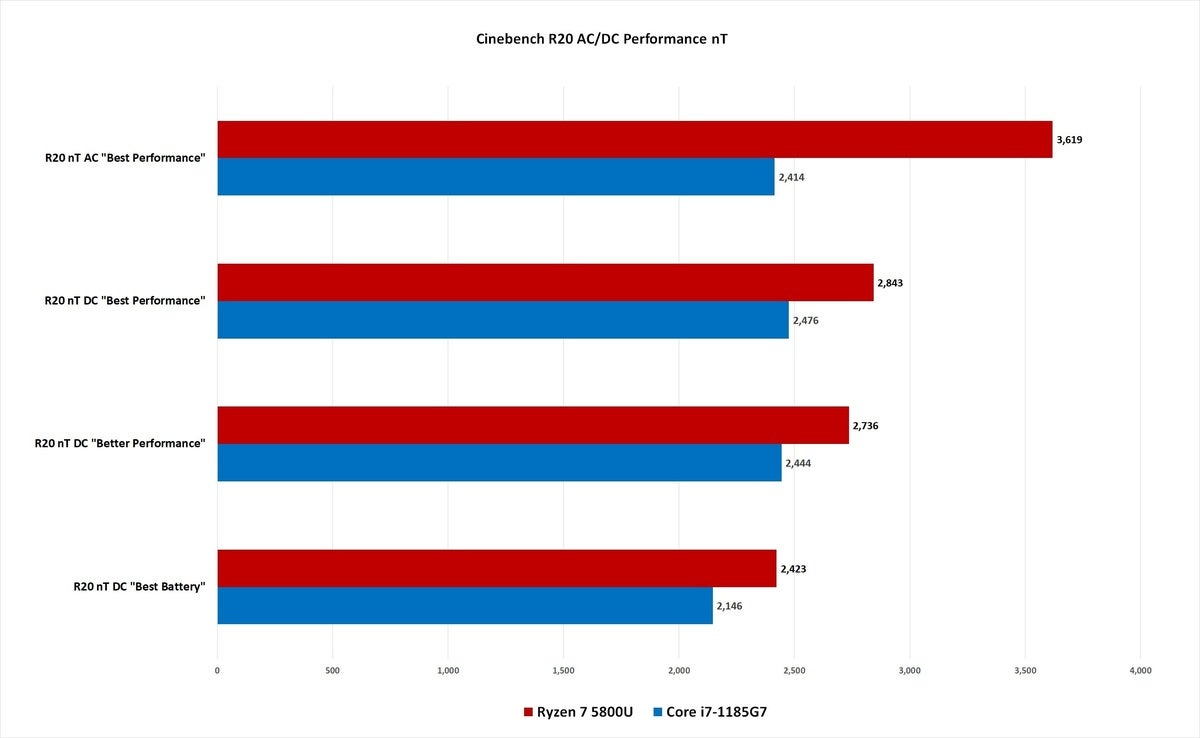 IDG
IDGIn Cinebench multithreaded performance, the Asus/Ryzen startso ff strong on AC, but lots most of its advantage on DC. Longer bars indicate better performance.
Using Cinebench R20 set to a single thread, we can see both laptop/CPU combos exhibit very different behaviors. The Core i7-1185G7 in the MSI basically doesn’t move going from AC to DC in Best Performance or Better Performance. Meanwhile, the Ryzen 7 5800U in the Ryzen is really chugging in the Better Battery setting in single-threaded tasks.
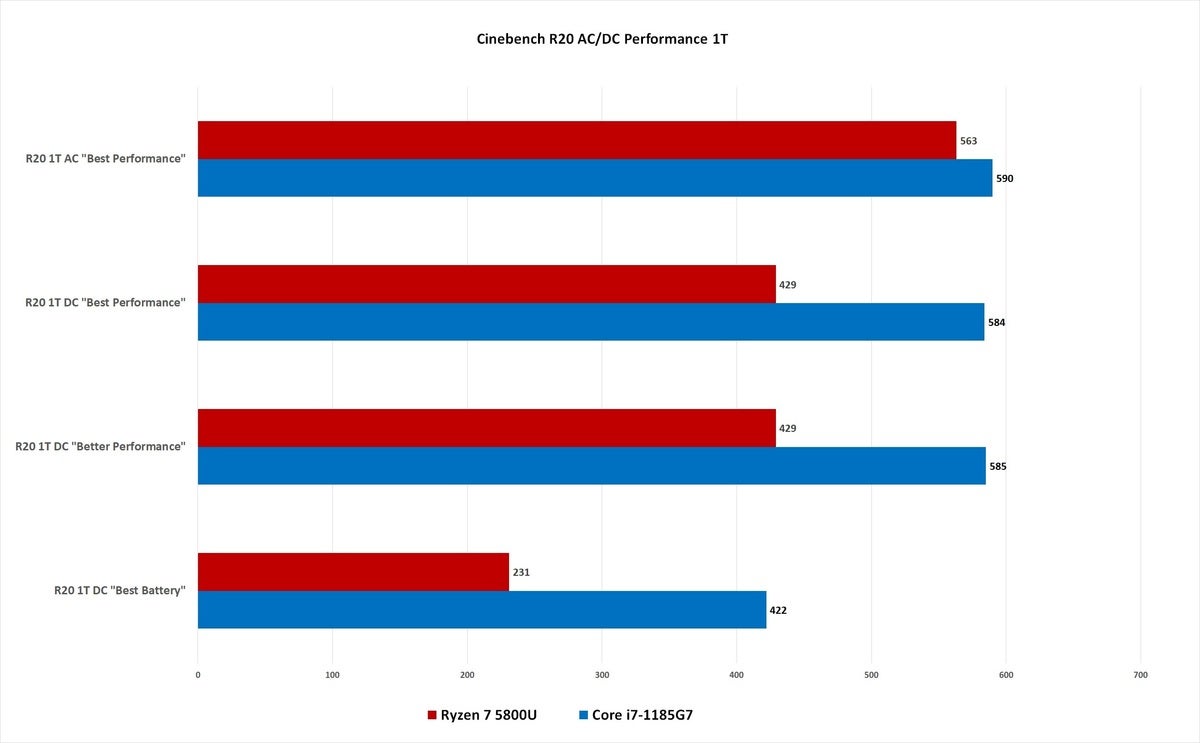 IDG
IDGIn Cinebench single-threaded, the MSI/Intel pairing prevails, while Ryzen loses more ground as you move through the different power settings. Longer bars indicate better performance.
Let’s take those Cinebench results and look at how both laptops compare as a percentage. In multi-core mode, you can see the Ryzen’s advantage range from a whopping 50 percent to narrower leads running on DC battery in the other power settings.
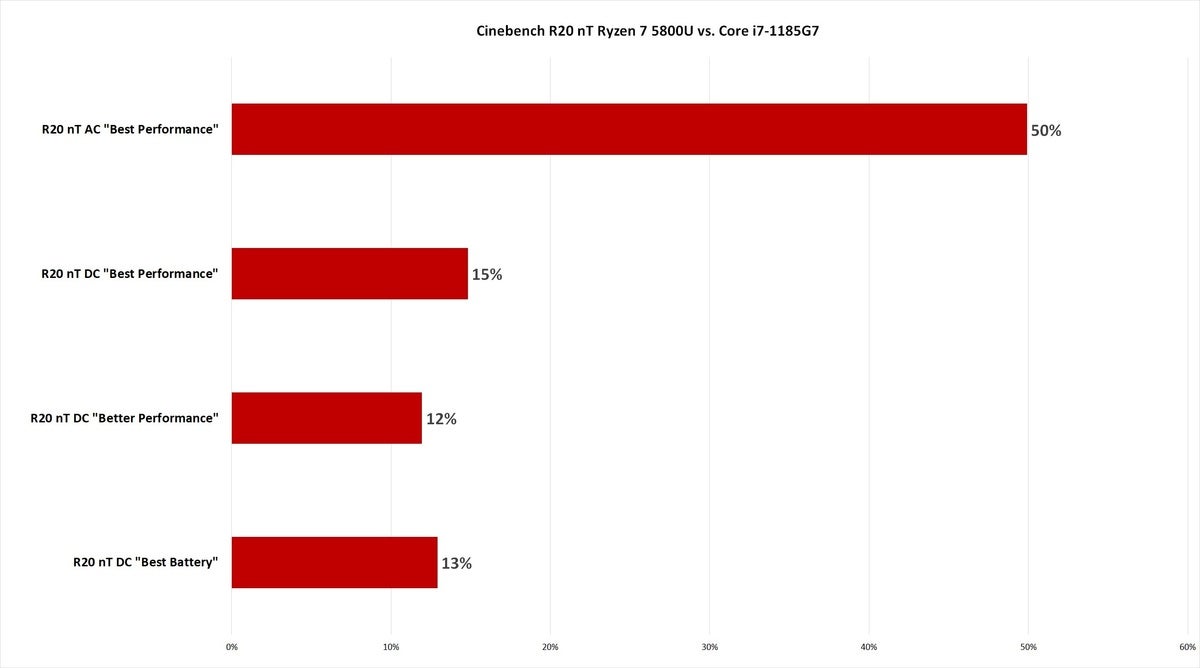 IDG
IDGLonger bars indicate better performance. This is how much performance the Ryzen 7 5800U sheds vs. an Intel Core i7-1185G7 when plugged or running on batteries, using three different Windows Power Performance Slider settings.
In single-threaded performance we see an inverted chart. That’s because while the Prestige 14/Core i7 was actually competitive with the ZenBook/Ryzen 7 on AC, we’re looking at a 27-percent to 45-percent lead for Intel on the DC battery settings. That’s a major difference, and we’ll likely see this manifest itself later on.
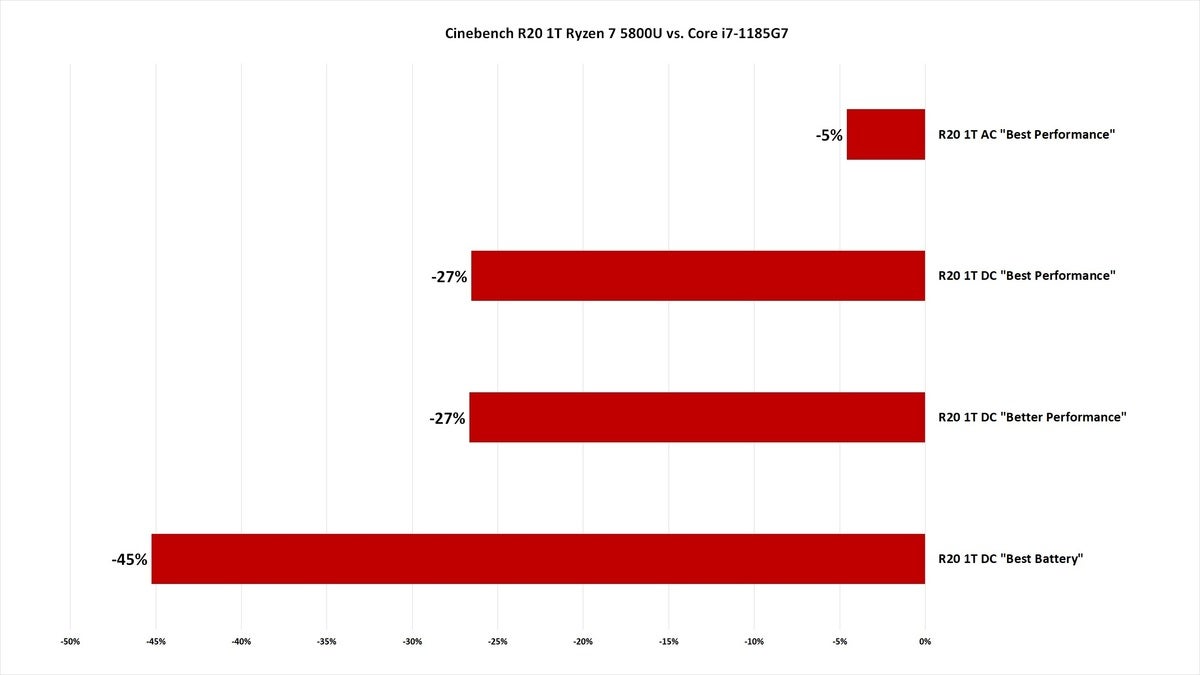 IDG
IDGThe AMD Ryzen 7 5800U laptop is always behind the Core i7-1185G7 laptop and drops further depending on the Windows power slider setting.
Ryzen vs. Core i7: Photoshop and Lightroom AC/DC
We know very few people perform 3D modelling or rendering on a 13-inch ultraportable laptop, so we use Adobe Photoshop 22.3 and Lightroom Classic 10 with UL’s Procyon Photo test as something that’s popular but not exactly lightweight, and still CPU- and GPU-intensive. Procyon runs both Adobe apps through a set of scripted tasks while measuring the response.
The good news for Ryzen in the Asus ZenBook is it’s outpacing Intel’s best U-class CPU in the MSI laptop. The nagging problem, though, is once you’re on battery, even on the laptop’s “Best Performance” setting, the ZenBook and Ryzen 7 are giving up 24 percent in performance in Photoshop and Lightroom against the Intel/MSI pair.
 Gordon Mah Ung/IDG
Gordon Mah Ung/IDGIn the Procyon benchmark, Intel/MSI holds steady in the “Best Performance” setting, while Ryzen/Asus falters when on battery. Longer bars indicate better performance.
Performance gets even harsher for the ZenBook/Ryzen 7 running on the Better Battery setting. It’s basically cut in half versus the MSI Prestige 14/Core i7.
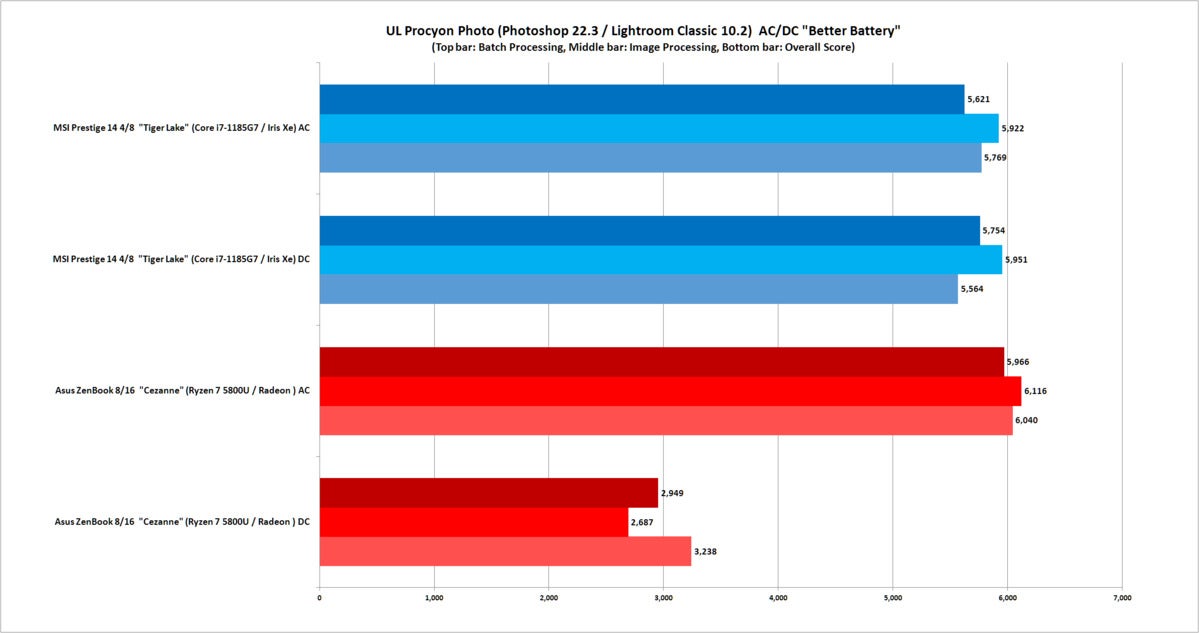 Gordon Mah Ung/IDG
Gordon Mah Ung/IDGIn the same Procyon benchmark but on the “Better Battery” setting, the Ryzen/Asus laptop falls even further behind when on DC battery. Longer bars indicate better performance.
With such a powerful suite as Photoshop, what you do can influence performance. We get a second opinion from workstation builder Puget Systems and its PugetBench 0.93 test.
We again see the Prestige 14 and Core i7 hold steady in performance between AC and DC using the “Best Performance” setting. The ZenBook and Ryzen 7 combo again sees a drop in performance from AC to DC.
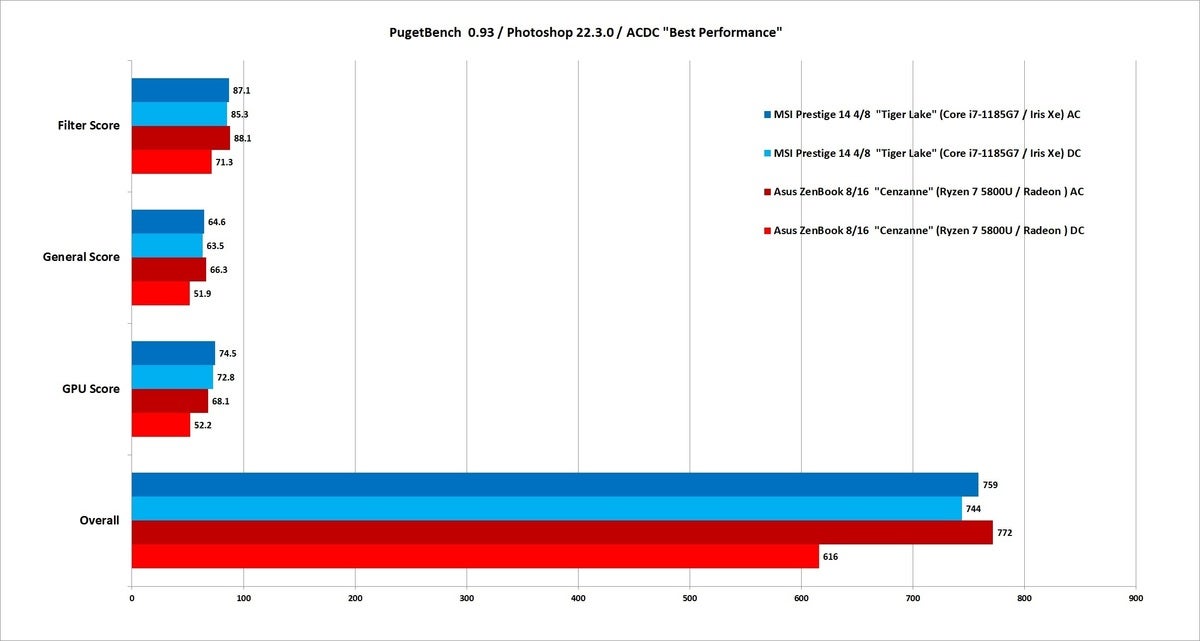 IDG
IDGIn PugetBench, the song remains the same: Asus/Ryzen drops back when on battery. Longer bars indicate better performance.
As with Procyon, PugetBench for Photoshop again sees a pretty drastic performance drop on “Better Battery.”
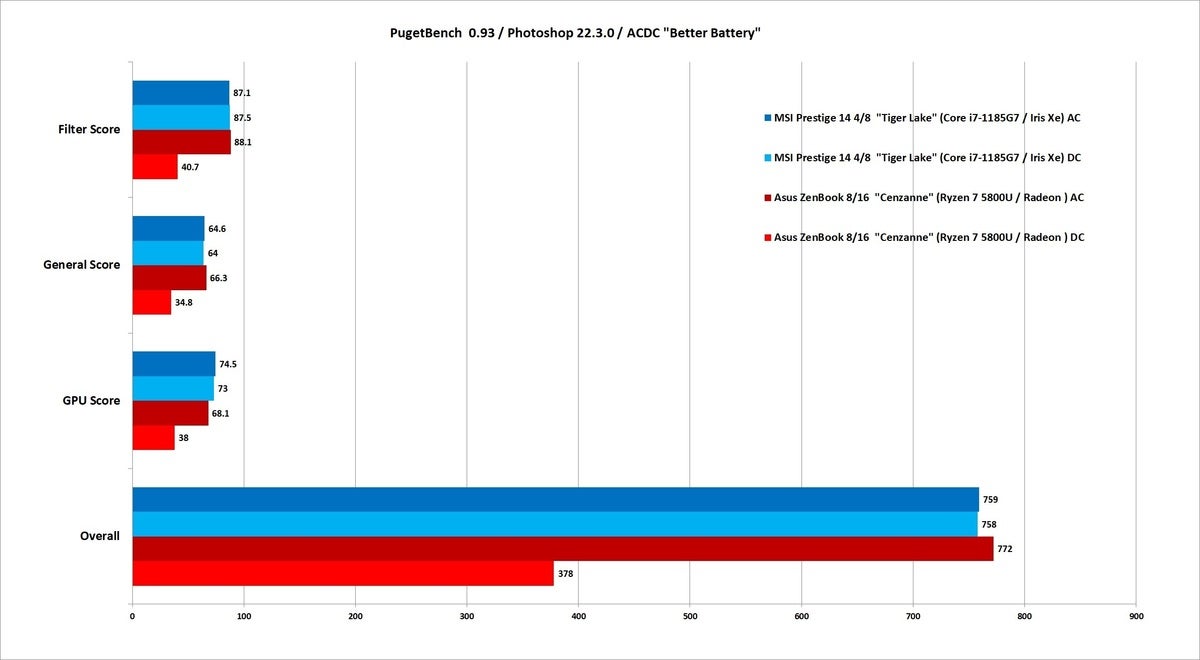 IDG
IDGThe Asus/Ryzen laptop falls more precipitously in ProCyon in “Better Battery” mode. Longer bars indicate better performance.
Keep reading for performance in Office, Edge browser, and more
[ad_2]
Source link